Introduction

The technique of painting on a guitar is a transforming activity that gives musicians the opportunity to express their creativity and personally customize their instruments. It doesn't matter if you want to give your old guitar a new and updated appearance or if you want to add a personalized design to a new instrument; painting your guitar can transform it from boring to trendy in a matter of minutes.
Why paint your guitar?

In addition to its aesthetic appeal, painting your guitar offers a wide range of other advantages as well. It gives you the opportunity to give an old instrument a new lease on life, to represent your personality, and to bring attention to yourself on stage. More than that, painting your guitar can shield it from the effects of wear and tear, guaranteeing that it will continue to be in excellent shape for many years to come.
Preparing Your Workspace
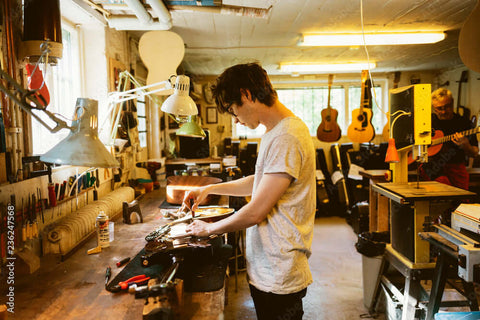
Setting up your workspace in the appropriate manner is a vital step to take before beginning the painting process. All of the necessary supplies, including as paint, primer, sandpaper, masking tape, and protective clothing, should be gathered together. You should select a location that has adequate ventilation and sufficient space to walk around in comfort.
Choosing the Right Paint
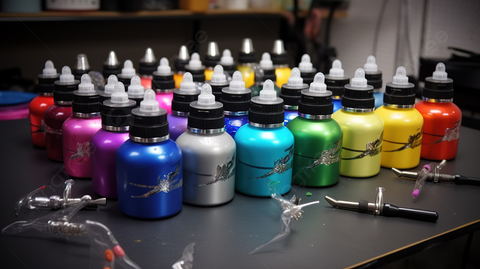
To achieve results that look like they were done by an expert, it is essential to choose the appropriate paint for your instrument. Take into consideration aspects such as the guitar's polish, durability, and compatibility with the material it is made of. Because of their adaptability and vivid coloration, acrylic and nitrocellulose paints are among the most popular options among guitarists who paint their instruments.
Preparing Your Guitar
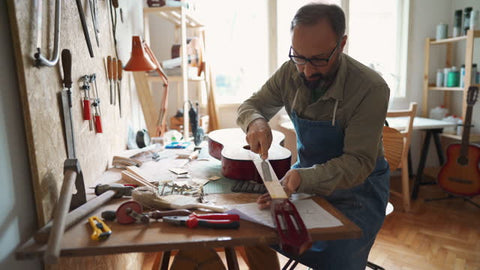
The preparation of the surface of your guitar is essential in order to guarantee that the paint will adhere correctly and provide a smooth finish. To begin, give the guitar a thorough cleaning to get rid of any dirt, grease, or residue that may be present. The next step is to sand the surface in order to provide a rough texture that will help the paint adhere better. To protect any portions of the guitar that you do not wish to paint, such as the fretboard and the hardware, you can use masking tape.
Applying Primer
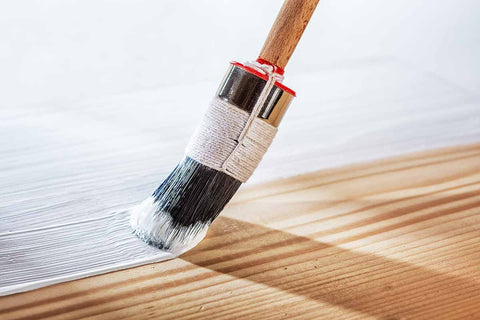
When it comes to producing a beautiful paint job, priming your guitar is really necessary. The use of primer helps to minimize uneven coverage and peeling by creating a surface that is smooth and consistent, which is necessary for the paint to adhere to. Following the application of a thin coat of primer that is distributed uniformly throughout the whole surface of the instrument, wait until it has completely dried before moving on to the subsequent stage.
Painting Your Guitar
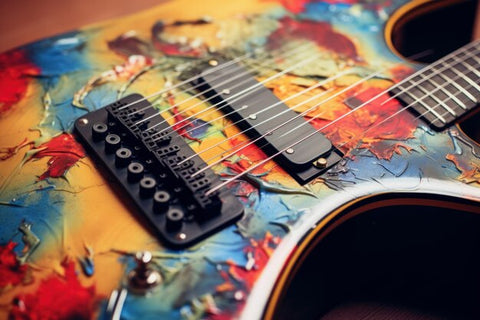
There are a number of different approaches that you may take when it comes to painting your guitar in order to reach the finished product that you want. Experimenting with different painting techniques can help you unleash your creativity and create a guitar that is really one of a kind. Whether you prefer solid colors, fades, or detailed motifs, you can customize your guitar to suit your preferences.
Adding Designs and Details
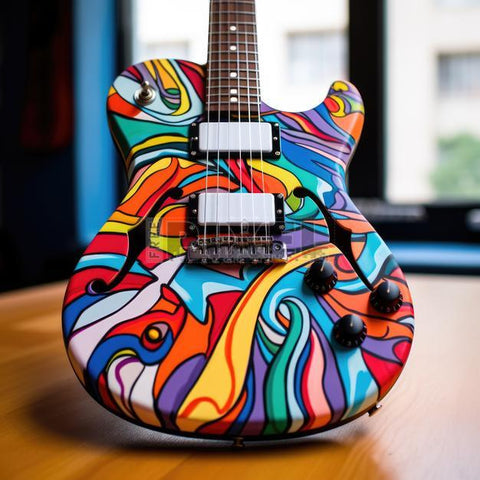
With your painted guitar, you have the opportunity to let your imagination go wild by adding motifs and embellishments to the instrument. It is possible to personalize your instrument in an infinite number of ways, ranging from stencils and decals to complicated patterns and bespoke graphics. This will allow your instrument to stand out from the crowd.
Applying Clear Coat
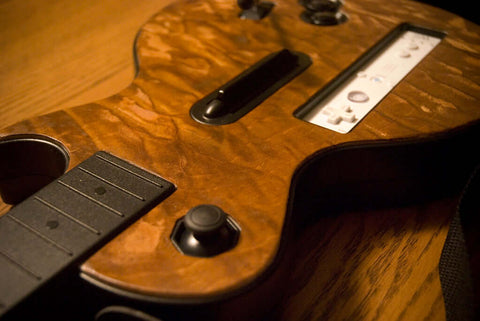
After you have completed the painting job to your satisfaction, it is important to apply a clear coat to the finish in order to prolong its durability and protect it. There is an additional layer of protection against scratches, dings, and UV damage that is provided by clear coat, which guarantees that your paint job will continue to look fantastic for many years to come.
Curing and Finishing Touches
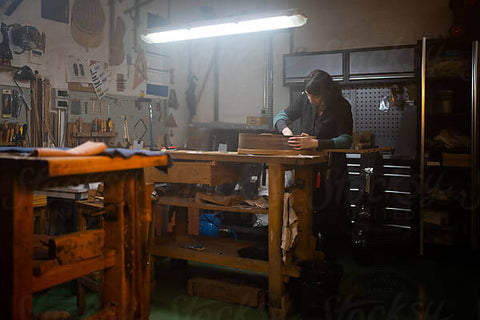
If you want the best possible results, it is absolutely necessary to give the paint and clear coat on your guitar enough time to dry correctly. When it comes to curing timeframes, make sure to follow the guidelines provided by the manufacturer, and resist the impulse to handle or play your guitar until the paint has completely dried. It is important to perform a final check of your instrument once it has been cured and to make any necessary changes or touch-ups.
Maintenance Tips

Maintaining and caring for your painted guitar in the appropriate manner is absolutely necessary if you want it to continue to look its best. It is important to keep your guitar away from temperatures or humidity levels that are too high or too low, and to clean and polish the surface on a regular basis in order to remove fingerprints and debris. Not only that, but you should also think about purchasing a high-quality guitar stand or case to safeguard your instrument when it is not being played.
Inspiration and Ideas
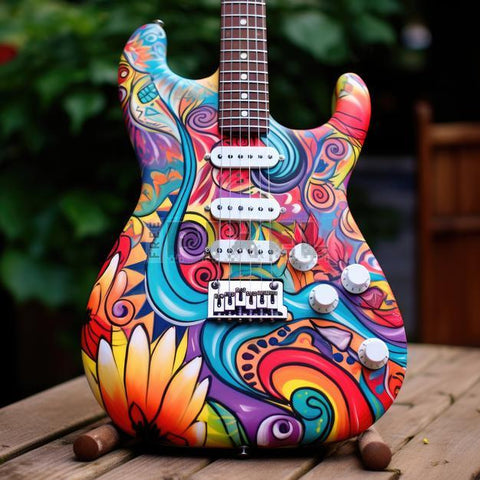
Whenever you find yourself feeling uninspired or stuck, there is a plethora of materials accessible to assist you in rekindling your creative spirit. There is a plethora of sources of inspiration and ideas to draw from, ranging from social media groups and internet forums to guitar painting seminars and tutorials.
Troubleshooting Common Issues
Even if you put in a lot of effort, there is a possibility that you will run into some typical problems when you are painting. If you are able to troubleshoot issues such as paint runs and drips, uneven coverage, and color differences, you will be able to create results that seem professional and avoid making mistakes that are expensive.
Frequently Asked Questions (FAQs)
1. Can I paint my guitar without stripping the old finish?
Answer: Yes, you can paint your guitar without stripping the old finish, but it's essential to prepare the surface properly to ensure the paint adheres correctly.
2. How long does it take to paint a guitar?
Answer: The time it takes to paint a guitar depends on various factors, including the complexity of the design, drying times between coats, and curing times for the paint and clear coat. On average, the process can take anywhere from a few days to a few weeks to complete.
3. Will painting my guitar affect its sound?
Answer: Painting your guitar is unlikely to have a significant impact on its sound, but it may affect the resonance and sustain slightly. However, the difference is usually minimal and can be offset by choosing the right paint and applying it correctly.
4. Can I repaint my guitar if I don't like the outcome?
Answer: Yes, you can repaint your guitar if you're not satisfied with the outcome. However, it's essential to remove the existing paint and primer completely before applying a new coat to ensure proper adhesion and a smooth finish.
5. Do I need special skills to paint my guitar?
Answer: While painting a guitar does require some patience and attention to detail, you don't need to be a professional artist to achieve great results. With the right supplies, techniques, and practice, anyone can paint their guitar and unleash their creativity.
Conclusion
Customizing your guitar through painting is a fun and gratifying method to show off your personality while also changing the look of your instrument. Experimenting with various painting techniques can help you convert your guitar from boring to fabulous and create a one-of-a-kind instrument that shows your individual style and ingenuity. This is true regardless of whether you are an experienced musician or just starting out.






